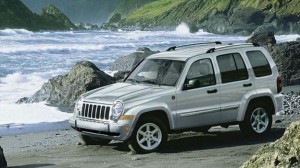
Mandated repairs on 1.56 million recalled Jeep Liberty and Grand Cherokee SUVs are not being completed as quickly as expected.
This coming June will mark the second anniversary of a settlement between Chrysler and federal regulators that resulted in the recall of 1.56 million Jeeps due to a potential fire hazard.
But so far, only a tiny fraction of the vehicles covered by that service action – 4% of the Jeep Grand Cherokees and 27% of the Jeep Liberty models – have actually been brought in for repairs. By comparison, about 75% of the vehicles subject to recalls in the U.S. are typically repaired within 18 months.
The slow response rate has generated concerns in Washington where Mark Rosekind, the new chief at the National Highway Traffic Safety Administration (NHTSA), has been hinting the agency might re-open its investigation.
“We want to figure out what else we can be doing,” Rosekind told reporters last week in Washington.
NHTSA has been leaning hard on automakers to find ways to increase the typical recall response rate – which ranges from about 60% to 80% depending on the type and severity of the problem. General Motors has taken a number of steps to encourage owners to come in to repair suspect ignition switches, including offering them gift cards. Honda, meanwhile, recently launched a national ad campaign to address the recall of defective Takata airbags.
Exactly how many Jeep products have been repaired is open to debate. NHTSA says it is just 4% of the Grand Cherokees and 27% of the affected Liberty models. Chrysler, however, puts the number at 9% for the former, 36% for the latter. The automaker claims its figures cover those vehicles still on the road. Since some of the Jeeps were produced as far back as 1993, many have already been scrapped.
It isn’t the first time Chrysler and federal regulators have disagreed. In fact, there is little they agree upon when it comes to the fundamentals of the Jeep recall. According to NHTSA and various safety and consumer groups, the two models are prone to catching fire when struck in the rear because they have gas tanks mounted behind the rear axle which means little protection in a rear crash.
For its part, Chrysler insists the data show little evidence that the older Jeeps are more prone to catching fire than any comparable product manufactured in that era: 1993-1998 for the Grand Cherokees, 2002 to 2007 for the Liberty models.
(Is Fiat Chrysler looking for a merger partner? For more, Click Here.)
Initially, Fiat Chrysler CEO Sergio Marchionne threatened to ignore NHTSA’s recall demand, but the maker backed down in June 2013 in a deal that sharply reduced the number of products that would be subject to the recall.
(Click Here for details about FCA’s expectations for 500X sales.)
The repairs involve mounting trailer hitches on the back bumper to provide some additional shielding of the gas tanks – a resolution many safety advocates have complained is not effective enough.
(To see more about Chrysler paying $150 million due Jeep fire, Click Here.)
The fire issue became a hot topic when a Georgia jury ruled Chrysler had acted in reckless disregard of human life in the design of the two Jeeps. They awarded $150 million to the family of a 4-year-old boy killed in a blazing crash of a Grand Cherokee three years ago.
Earlier this week, Fiat Chrysler sent a letter to its dealers, according to the Associated Press, acknowledging the recall completion rates “have not met expectations.” It advised them to contact the maker if they are “facing barriers that are preventing your dealership from completing these important recalls.” The maker said it will take steps “to eliminate any barriers” and speed up the repair process.”

NHTSA is strange in that they keep stating they have limited resources and can’t investigate certain reported safety defects (in certain GM models recently) yet they seem to be pressuring FCA over a debatable defect.
I still can’t figure out how BMW is getting away with not fixing the documented safety defect listed on the NHTSA website for the chronic failure of the high pressure fuel pumps on the X35i models, which causes these cars to shut off at speed without warning.
It’s as if NHTSA has an agenda toward certain car makes but not others? I think ALL safety defects should be properly repaired no matter who the maker is.